- Top Employee Onboarding Software
- Why Use Employee Onboarding Software?
- Key Features of Effective Onboarding Software
- How To Choose The Right Onboarding Software?
- Which is the Best Onboarding Software?
- Frequently Asked Questions (FAQs)
- What Is Upskill And Reskill?
- Difference Between Reskilling And Upskilling
- Upskilling for Workplace Advancement
- Reskilling for Career Transformation
- Crafting Successful Upskill and Reskill Strategies
- Upskill And Reskill Strategizing: Things to Keep in Mind
- Measuring the Impact of Skill Development Initiatives
- Frequently Asked Questions
- What’s a Skill Gap?
- Employee Skill Gap Analysis: Why Do We Need It?
- How To Conduct Employee Skill Gap Analysis?
- Addressing Skill Gaps Through Training and Hiring
- Utilizing Skills Gap Analysis for Strategic Planning
- Leveraging Employee Skill Gap Analysis: Things To Keep In Mind
- Frequently Asked Questions
- Transformative Role of AI in Talent Acquisition
- Impact of AI on Business Recruiting
- Overcoming Challenges in AI-Driven Talent Acquisition
- Starting with AI in Talent Acquisition
- Future Landscape of AI in Talent Acquisition
- Frequently Asked Questions
- HR In The Hot Seat - Challenges With Evolving Workforce
- Mastering Effective HR Management: Tips For Overcoming Challenges
- Summing Up
- The Future of HR: Key Trends for 2024
- Skill-Based Hiring
- Prioritizing Employee Experience, Engagement & Well-being
- AI-Empowered Workforce Evolution and Its Impact
- Taking Diversity, Equity, and Inclusion Beyond Mandates
- Hybrid and Remote Work
- Embracing the Gig Economy and Blended Workforce
- Transparent HR Practices
- Climate Change Adaptation in HR Practices
- Leveraging HR Analytics for Data-Driven Decisions
- Continuous Learning & Development to Improve Productivity
- The Office Buzz in 2024
- Bottom Line - HR Operating Model Needs A Shift
- Importance and Impact of Recognizing Employee Birthdays
- Professional Birthday Wishes for Employees (All Experience Levels)
- Personalized Birthday Wishes for Employees in Different Roles
- Fun Birthday Wishes for Employees (with Templates)
- Birthday Wishes for Remote Employees
- Heartfelt Birthday Wishes for Employees
- Belated Birthday Wishes for Employees
- Simple & Sweet Birthday Wishes for Employees
- Celebrating Employee Birthdays: Ideas and Traditions
- Tips and Ideas for Sending Birthday Wishes to Employees
- Closing Thoughts
- Frequently Asked Questions
- What Is An Employee Referral?
- Benefits of Implementing Employee Referral Programs
- Setting Up an Effective Employee Referral Program
- Employee Referral Email
- Employee Referral Scheme
- Overcoming Challenges of Employee Referrals
- Companies with Best Employee Referral Programs
- Employee Referral Programs: Best Practices
- Closing Thoughts
- Frequently Asked Questions (FAQs)
- Importance of Team Building Activities
- Types of Team Building Activities
- Outdoor Team Building Activities for Employees
- Indoor Team Building Activities for Employees
- Easy Team Building Activities for Remote Employees
- Team Building Activities For New Employees (Icebreakers)
- Fun Team Building Activities for Different Goals
- To Boost Communication and Collaboration
- To Reduce Stress Levels and Promote Well-being
- Aligning Team Purpose and Values with Strategic Activities
- Final Remarks
- Frequently Asked Questions
- Importance of Employee Appreciation Quotes
- Work Appreciation Quotes for Employees
- Employee Appreciation Quotes for Hard Work Recognition
- Employee Appreciation Quotes for Teamwork and Collaboration
- Appreciation Quotes for Celebrating Employee Anniversaries and Milestones
- Employee Appreciation Quotes for Strong Work Ethics
- Employee Appreciation Quotes for Project & Goal Completion
- Employee Appreciation Quotes for Quality of Work
- Employee Appreciation Quotes for Creativity and Innovation
- Appreciation Quotes for Managers
- Peer-to-Peer Employee Appreciation Quotes
- Appreciation Quotes for Employees Leaving the Company
- Employee Appreciation Quotes for Thoughtful Gestures
- Funny Employee Appreciation Quotes
- Short Employee Appreciation Quotes
- Employee Appreciation Quotes for Different Roles
- Employee Appreciation Quotes for Senior Leadership
- Creative Ways to Use Employee Appreciation Quotes
- Summary
- Frequently Asked Questions (FAQs)
- What is Employee Satisfaction?
- Importance of Employee Satisfaction
- Objectives of Employee Satisfaction
- Employee Satisfaction vs. Employee Engagement
- Key Reasons for Employee Dissatisfaction
- Strategies for Improving Employee Satisfaction
- Ways to Measure Employee Satisfaction
- Best Practices for High Employee Satisfaction
- Final Remarks
- Frequently Asked Questions (FAQs)
- How to Craft Effective Employee Appraisal Comments
- Key Areas to Focus in Performance Review
- Comments On Hard Work & Dedication
- Assessing Interpersonal Skills
- Evaluating the Ability to Collaborate & Work in Teams
- Gauging Punctuality
- Commenting on Communication Style
- Reviewing Time Management and Productivity
- Leadership in Performance Appraisals
- Assessing Creativity & Innovation
- Evaluating Problem-Solving Abilities
- Recognizing Flexibility and Dependability in Reviews
- Employee Appraisal Comments for Different Roles
- Summary
- Frequently Asked Questions (FAQs)
- Employee Grievance Meaning
- Importance of Employee Grievance Process
- Types of Workplace Grievances
- Reasons for Employee Grievances
- Employee Grievance Procedure
- Steps in the Employee Grievance Handling Process
- Employee Grievance Form Example
- Final Remarks
- Frequently Asked Questions (FAQs)
- What is Company Culture?
- Importance of Company Culture
- Types of Company Culture
- Factors Contributing to Organizational Culture
- Assessing & Developing Corporate Culture
- Company Culture - It’s not just Perks or Feels
- Good Company Culture Examples
- Developing Company Culture: Best Practices
- Closing Thoughts
- Frequently Asked Questions (FAQs)
- What is Employee Empowerment?
- Benefits of Empowering Employees
- Employee Empowerment vs. Micromanagement
- Strategies for Effective Employee Empowerment
- Role of Managers in Fostering Empowerment
- Organizational Structure Supporting Empowerment
- Overcoming Barriers to Employee Empowerment
- Frequently Asked Questions (FAQs)
- What is Employer Branding?
- Importance of Employer Branding Strategy
- How to Build an Employer Branding Strategy?
- Strategies for Building a Strong Employer Brand
- How to Measure and Boost Your Employer Branding Success?
- Examples of Strong Employer Brand Strategy
- Best Practices for an Effective Employer Branding Strategy
- Closing Thoughts
- Frequently Asked Questions (FAQs)
- What are Employee Wellness Programs?
- Importance of Employee Wellness Programs
- Examples of Employee Wellness Programs
- Real-Life Examples of Corporate Wellness Programs
- Strategies for Encouraging Participation
- Supporting Diverse Employee Needs
- Creating Comprehensive Wellness Programs
- Measuring the Impact on Business and Employees
- Closing Thoughts
- Frequently Asked Questions (FAQs)
- What is Talent Management?
- Developing a Winning Talent Management Strategy
- Models and Frameworks
- Tips for Framing Effective Talent Management Strategy
- Looking Ahead: Recent Trends in Talent Management
- Frequently Asked Questions
- Role of AI in HR: Addressing Common Challenges
- Artificial Intelligence in HR Processes
- AI Tools for HR Functions
- How to Adopt AI in HR?
- Addressing Challenges of AI in HR
- Ethical and Responsible AI Use
- The Future of AI in HR
- Closing Thoughts
- Frequently Asked Questions
- What is Performance Management?
- Elements of Effective Performance Management
- Performance Management Cycle
- Differentiating Performance Management
- Benefits of Performance Management With Examples
- Challenges faced in Performance Management and their Solutions
- Future Trends in Performance Management
- Frequently Asked Questions
- Changing Role of HRM
- Changing Role Of HR Manager
- Technology and the Changing Role of HRM
- The Rise of AI and Machine Learning in HR
- Mobile Technology's Impact on HR Practices
- The Significance of People Analytics in HR
- Navigating the Future of HR Technology
- Final Remarks
- Frequently Asked Questions
- Compensation Management Meaning
- Compensation Types
- Breaking Down The Compensation Management Process
- HR Software for Compensation Management
- Current Trends in Compensation Management
- Frequently Asked Questions
- Defining Flexible Work Arrangements
- Flexible Working: Advantages for Businesses
- Challenges of Flexible Work Arrangements
- Crafting Flexible Working Practices
- Types Of Flexible Work Arrangements
- Comparing Flexible Work Arrangements
- Real-Life Examples of Flexible Work Arrangements
- Final Remarks
- Frequently Asked Questions
- Conflict Resolution Meaning
- Conflict Origins
- Tried & Tested Conflict Resolution Strategies
- Methods of Conflict Management at Workplaces
- Conflict Resolution Strategies: Top Management Tips
- Summary
- Frequently Asked Questions
- Career Development Meaning
- Career Development Plan for Employees
- Career Development in HRM: Growth Ideas For Employees
- Issues in Career Development and Their Solutions
- Closing Thoughts
- Frequently Asked Questions
- Understanding Compensation
- Exploring Benefits
- Difference between Compensation and Benefits
- Compensation & Benefits Structure
- Final Remarks
- Frequently Asked Questions
- Defining Recruitment in HR Practices
- Exploring Talent Acquisition in HR
- Understanding Talent Acquisition vs Recruitment
- When to Recruit or Acquire Talent
- Talent Acquisition vs Recruitment: Responsibilities
- From Recruitment To Talent Acquisition
- Closing Thoughts
- Frequently Asked Questions
- Work Culture Meaning
- Types of Work Cultures
- Components of Culture
- Best Work Culture Examples Set By Top Companies
- Creating a Positive Work Culture
- Closing Thoughts
- Frequently Asked Questions
- Defining Learning vs Development
- Importance of Learning and Development
- L&D Activities for Employees
- Choosing the Right L&D Activities
- Crafting an Effective L&D Strategies
- Aligning L&D Strategy with Business Goals
- Designing Engaging Learning Journeys
- Learning and Development Process: KPIs
- ROI in Learning and Development
- Emerging Trends in L&D
- Closing Thoughts
- Frequently Asked Questions
- What Is Leadership Development?
- Key Skills for Leaders
- How To Develop Leadership Skills in Organizations?
- What Is A Leadership Development Program?
- How To Develop A Leadership Development Program?
- Example of A Leadership Development Plan
- Benefits of Leadership Development Training
- Frequently Asked Questions
- Defining Diversity Training
- Importance of Diversity Training
- What are the Types of Diversity?
- Types of Diversity Training Methods
- Diversity Training Activities
- Choosing A Diversity Training Program
- How to Implement Diversity Initiatives
- Best Diversity Training Programs (Real-Life Examples)
- Improving the Effectiveness of Diversity Training
- Tracking and Evaluating the Results of DE&I Training Efforts
- Essential Elements for Successful Diversity Training
- Closing Thoughts
- Frequently Asked Questions
- Defining Occupational Health & Safety
- Evolution of Workplace Health and Safety
- Identifying Common Workplace Hazards
- Global Impact on Occupational Health & Safety
- Managing Employee Health and Safety Risks
- Occupational Health and Safety Problems
- Future of Occupational Health and Safety
- Frequently Asked Questions
- Employee Orientation Defined
- Employee Onboarding Explained
- Orientation and Onboarding: Understanding the Difference
- Importance of Orientation and Onboarding
- Crafting Comprehensive Integration Strategies
- Quick Tips for Orientation and Onboarding
- Frequently Asked Questions
- What is HR Metrics?
- Importance of HR Metrics
- HR Metrics Examples in Recruitment
- HR Metrics Examples in Employee Retention
- HR Metrics Examples in Revenue
- Other Common HR Metrics
- Soft HR Metrics Example
- HR Metrics Formula
- Utilizing HR Metrics Effectively
- Future of HR Metrics
- Summary
- Frequently Asked Questions
- Defining Decision Making Process
- Key Concepts In Decision Making
- Decision Making & Problem Solving
- Tips For Improving Decision Making Skills
- Selected Practice Questions & Answers
- Conclusion
- Frequently Asked Questions (FAQs)
- A case(s) of miscommunication
- The devil is in the (resume) details
- One for the complaints!
- What is an Exit Interview?
- Benefits of Exit Interviews to an Organization
- How to Conduct Exit Interviews?
- Exit Interview: Sample Questions to Ask
- Overcoming Challenges of Exit Interviews
- Exit Interviews: Best Practices
- Closing Thoughts
- Frequently Asked Questions
- Technology in the Workplace
- Benefits of Tech Integration
- Technology in the Workplace: Key Functions
- How Technology Normalized Remote Work
- Workplace Technology: Top Tools and Software
- Steps for Effective Technology Implementation
- Overcoming Tech Implementation Challenges
- Ethical Considerations in Tech Use
- Keeping Pace with Tech Trends
- Closing Thoughts
- Frequently Asked Questions
- What is Ethical Leadership?
- Principles of Ethical Leadership
- Difference between Ethics and Integrity
- Importance of Ethical Leadership
- Ethical Leadership in Practice
- Overcoming Challenges
- Frequently Asked Questions
- Embracing Change Management
- Mastering People Analytics
- Enhancing Stakeholder Relationships
- Navigating Diversity, Equity & Inclusion
- Upholding Ethics and Data Privacy
- Developing Critical Thinking
- Advancing Negotiation Techniques
- Fostering Inter-departmental Collaboration
- Building Resilience in HR
- Frequently Asked Questions
- What is Mental Health?
- Benefits of a Mentally Healthy Workforce
- Prioritising Mental Health: Creating a Culture of Support
- Final Remarks
- Frequently Asked Questions
- Gen Z vs Millennials - What is the difference?
- Retain and Engage Gen Z Employees: Need and Strategies
- Strategies to Retain and Engage Gen Z Employees
- Rethinking Requirements
- Final Remarks
- Frequently Asked Questions
- Understanding Millennial Leadership Needs
- Key Leadership Skills for Millennials
- How To Develop Millennial Into Leaders
- Additional Strategies to Develop Leaders
- Learning Preferences of Millennials
- Benefits of Investing in Millennial Leaders
- Closing Thoughts
- Frequently Asked Questions
- Understanding Fluff
- Examples of Interview Fluff
- Identifying Interview Fluff
- Addressing Interview Fluff
- Seeing Through the Fluff
- Frequently Asked Questions
- What is the Gender Pay Gap?
- Is the Gender Pay Gap Real?
- Factors Affecting the Gender Pay Gap
- How Age Impacts Women’s Earnings
- The ‘Motherhood Penalty’
- Education's Role in Wage Differences
- Racial and Ethnic Disparities in Pay
- Closing the Gender Gap
- Frequently Asked Questions
- Top Weirdest Late-To-The-Office Excuses
- The Fine Art of Balancing Wit and Wisdom in HR
- Understanding Social Media Recruiting
- Crafting Your Social Media Recruitment Strategy
- Implementing Your Strategy Effectively
- Popular Platforms for Recruitment
- Navigating the Downsides of Social Media Recruiting
- Measuring Success and Adjusting Strategy
- Summary
- Frequently Asked Questions
- Who Is A High Potential (HIPO) Employee?
- Characteristics of A High Potential (HIPO) Employee
- High Potential Employee Identification
- Grooming High Potential Employees
- Why High Potential Employees Leave
- How Do You Retain High Potential Employees?
- High Potential Employee Development: Best Practices
- Closing Thoughts
- Frequently Asked Questions
- What is Digital Fluency?
- Why Digital Fluency Matters?
- Difference between Digital Literacy and Digital Fluency
- Key Components of Digital Fluency
- Achieving Digital Fluency
- Overcoming Challenges
- Future of Workforce Digital Fluency
- Frequently Asked Questions
- What is Loud Quitting?
- Pros and Cons of Loud Quitting
- Reasons Behind the Trend
- Analyzing the Impact
- How HR Can Navigate the Loud Quitting Uproar
- Preventive Strategies
- Closing Thoughts
- Frequently Asked Questions
- Defining Emotional Intelligence in HR
- Why Emotional Intelligence Matters for HR Leaders
- How To Build Emotional Intelligence in HR
- Integrating EQ into HR Practices
- Impact of EQ on Company Culture
- Emotional Intelligence in HR: Major Challenges
- Final Remarks
- Frequently Asked Questions
- Understanding Internal Job Posting
- Internal Job Posting: Pros and Cons
- The Internal Job Posting Process
- Writing Effective Ads for Internal Job Posting
- Strategies for Success of Internal Job Posting
- Summary
- Frequently Asked Questions
- Understanding Workplace Bias
- Common Types of Bias in HR
- Closing Thoughts
- Frequently Asked Questions
- What is a Dry Promotion?
- Dry Promotion: Pros and Cons for Companies
- Impact of Dry Promotion on Employee Retention
- Preventing Talent Loss After Dry Promotions
- Closing Thoughts
- Frequently Asked Questions
- What Is A Stay Interview?
- Importance Of Stay Interviews
- Benefits And Challenges Of Stay Interviews
- Planning And Conducting Stay Interviews
- Stay Interviews: 20 Sample Questions To Ask
- Best Practices For Effective Stay Interviews
- Summary
- Frequently Asked Questions
- Who Is A Boomerang Employee?
- Reasons For Returning
- Benefits Of Hiring Boomerang Employees
- Challenges Of Rehiring
- Interviewing Boomerang Candidates: Sample Questions
- Enhancing The Hiring Process
- Making Informed Decisions
- Final Remarks
- Frequently Asked Questions
- Talent Pipeline Meaning
- Significance of Talent Pipelines
- Advantages of a Talent Pipeline
- Building a Talent Pipeline
- Maintaining a Talent Pipeline
- Attracting Top Talent
- Implementing the Strategy
- Frequently Asked Questions
- What is Micromanagement?
- Recognizing Micromanagement
- Leadership versus Micromanagement
- Keeping Micromanagement in Check
- Beyond Micromanagement
- Summing Up
- Frequently Asked Questions
- Recognizing Signs Of A Bad Hire
- Understanding The Impact On Teams
- Dealing With A Bad Hire
- Preventing Future Bad Hires
- Closing Thoughts
- Frequently Asked Questions
- Defining Neurodiversity
- Importance of Neurodiversity in the Workplace
- Moving Towards Inclusive Environments
- Final Remarks
- Frequently Asked Questions
- Understanding the Generation Gap
- Multigenerational Workforce: Debunking Stereotypes
- Strategies for Bridging the Gap
- Benefits of a Multigenerational Workforce
- Final Remarks
- Frequently Asked Questions
- Defining Productivity Theatre: All Show, No Go
- 5 Key Drivers of Fake Productivity
- Solutions to Combat Productivity Theatre
- Summary
- Frequently Asked Questions
- Defining Grumpy Staying
- Why do Grumpy Stayers not Leave?
- Recognizing the Signs
- Exploring the Causes
- Understanding the Impact
- Addressing the Issue
- Taking Action: Addressing Grumpiness with Empathy
- After the Conversation
- When Grumpy Staying Continues
- Closing Thoughts
- Frequently Asked Questions
- The Rationale Behind Office Peacocking
- Impact on Company Culture
- Impact on Employees
- Case Studies: Examples of Office Peacocking
- The Downside: Potential Pitfalls of Office Peacocking
- Practical Tips for Implementing Office Peacocking
- Frequently Asked Questions
- 13 Common Mistakes Young Managers Make
- Strategies To Avoid Mistakes (Individual Growth)
- How Young Managers Can Boost Teamwork
- Learning From Errors
- Summary
- Frequently Asked Questions
- Understanding Great Regret - What causes the shift shock?
- Impact of Great Regret
- How can HR help make the situation better?
- Closing Thoughts
- Frequently Asked Questions
- Understanding the HR Budget
- Key Components of an HR Budget
- Preparing an HR Budget Step-by-Step
- Importance of HR Budgeting in Management
- Final Remarks
- Frequently Asked Questions
- What are Pre-Employment Assessments?
- Importance of Pre-Employment Testing
- Types of Pre-Employment Assessments
- 15 Tips for Creating Effective Pre-Employment Assessments
- Closing Thoughts
- Frequently Asked Questions
- Exploring the Productivity Paradox
- Understanding the Impact of Solow Paradox
- Productivity Paradox: Why it Matters for Recruiters & HRs
- Identifying Causes and Challenges
- Strategies for Enhancing Productivity
- AI & the Modern-Day Productivity Paradox
- Beyond Technology: Building a Productive Workforce
- Summary
- Frequently Asked Questions
- Understanding the Great Reshuffle 2.0
- Preparing Leaders for the Change
- HR’s Role in Handling Great Reshuffling 2.0
- The Way Ahead
- Frequently Asked Questions
- Definition Of Managerial Grid
- Managerial Grid Theory Explained
- Application Of Managerial Grid
- Criticisms And Limitations
- Evolution And Contemporary Perspectives
- Integrating Managerial Grid With Other Models
- Practical Steps For Implementing Managerial Grid
- Conclusion
- Frequently Asked Questions
- Understanding Skills Taxonomy
- Why do we Need Skills Taxonomy?
- Benefits of Skills Taxonomy
- Components of Skills Taxonomy
- Building a Skills Taxonomy: A Step-by-Step Guide
- Skill Taxonomies vs Intelligence Tools
- Closing Thoughts
- Frequently Asked Questions
- Definition Of Team Building
- Stages Of Team Development
- Top 10 Strategies For Effective Team Building
- Team Building Activities
- Best Practices For Effective Team Building
- Setting Team Building Objectives
- Challenges In Team Building
- Conclusion
- Frequently Asked Questions (FAQs)
- Defining Job Shadowing
- Unpacking the Benefits
- Setting Up the Experience
- Job Shadowing vs Internship
- Dos and Don'ts for HR Professionals
- Closing Thoughts
- Frequently Asked Questions
- Employee Journey Mapping: Meaning & Importance
- Stages of the Employee Journey
- Steps for Effective Mapping
- Employee Journey Map: Where does it begin?
- Employee Journey Map: Template
- Best Practices & Tips
- Summary
- Frequently Asked Questions
- Why are Performance Appraisals needed?
- Evolution of Performance Management
- Modern Performance Practices
- Benefits of Modern Performance Appraisals
- The Future
- Frequently Asked Questions
- Is Experience the Sole Indicator of Success?
- Why Hire Inexperienced Talent?: Key Advantages
- Skills to Look For in Inexperienced Talent
- Challenges and Considerations in Hiring Inexperienced Talent
- Final Remarks
- Frequently Asked Questions
- What is a Company Retreat?
- Company Retreat Ideas: Team-Building & Exploration
- Relaxation and Celebration
- Planning Your Retreat: Things to Keep in Mind
- Closing Thoughts
- Frequently Asked Questions
- Understanding HR Forecasting
- HR Forecasting Key Concepts
- Steps for Implementing HR Forecasting
- Common HR Forecasting Methods
- Closing Thoughts
- Frequently Asked Questions
- What is ESG?
- HR and ESG - Why Care?
- ESG in HR Strategy
- Challenges for HR
- Future of ESG in HR
- Frequently Asked Questions
- Defining the Great Betrayal
- Reasons for Its Spread
- Impact on Workers
- Impact on Corporations
- Rebuilding Trust & Valuing Employees
- Closing Thoughts
- Frequently Asked Questions
- Importance of Clear Expectations
- Setting Expectations Early
- Communicating Expectations Effectively
- Differentiating Expectations
- Reviewing and Adjusting Expectations
- Summing Up
- Frequently Asked Questions
- Understanding KRA Frameworks And Models
- KRAs vs KPAs and KPIs
- Monitoring and Tracking KRAs
- KRAs in Various Roles
- Impact of KRA Frameworks and Models on Organizational Success
- Frequently Asked Questions
- Where: The Place of Work
- When: The Time of Work
- How Much Work: Alternate Employment Models
- Who Does the Work: Intelligence
- Designing Organizations with the Four Dimensions of Work
- Summing Up
- Simplifying Processes: The Foundation of Efficiency
- Reducing Unnecessary Meetings: Reclaiming Valuable Time
- Building Strong Accountabilities: Ensuring Responsibility
- Role of HR in Addressing Inefficiencies
- Continuous Improvement: A Commitment to Excellence
- Leadership's Role in Driving Efficiency
- Conclusion: A Holistic Approach to Efficiency
- Understanding Financial Freedom
- Benefits of Empowering Employees Financially
- Empowering Employees Through Financial Literacy
- Financial Topics That Need Attention Based On Career Stage
- Summing Up
- Frequently Asked Questions
- Defining Employee Voice
- Benefits of Amplifying Employee Voice
- Strategies and Tools
- Encouraging Participation
- Closing Thoughts
- Frequently Asked Questions
- Appraisal Blues: Signs of Unhappy Employees
- Addressing Unhappiness Post-Appraisal
- Non-Monetary Solutions for Dissatisfied Employees
- Summing Up
- Frequently Asked Questions
- Women in the Middle Eastern Workforce
- Importance of DEIB
- Role of HR in Building Inclusive Workplaces for Women
- Measuring Inclusion Progress: Key Metrics
- Closing Thoughts
- Frequently Asked Questions
- Preparing for the Conversation
- Conducting the Conversation
- Best Practices for the Talk
- After the Conversation
- Helping Employees Grow
- Frequently Asked Questions
- Understanding HR Exhaustion
- Factors Leading To HR burnout
- Impact Of HR Burnout
- Strategies To Prevent And Manage HR Burnout
- Role Of Technology In Preventing Burnout
- Celebrating HR Successes
- Summary
- Frequently Asked Questions
- Common Mistakes When Hiring Young Talent
- Building Connections with Candidates
- Summary
- Frequently Asked Questions
- Walking a mile in the employee’s shoes
- Conducting Humane Layoffs
- Remote Layoffs Management
- Supporting Laid-off Workers
- Managing the Aftermath
- Wrapping Up
- Frequently Asked Questions
- Importance of Shortening Time-to-Hire
- Shortening Hiring Time: Pre-Application Stage
- Reducing Hiring Time: Application Stage
- Hacks to Shorten Hiring Time: Interview Stage
- Reducing Hiring Time: Offer Stage
- 5 Other Important Hacks & Strategies
- Final Remarks
- Frequently Asked Questions
AI In HR: The Ultimate Guide To Its Opportunities & Challenges
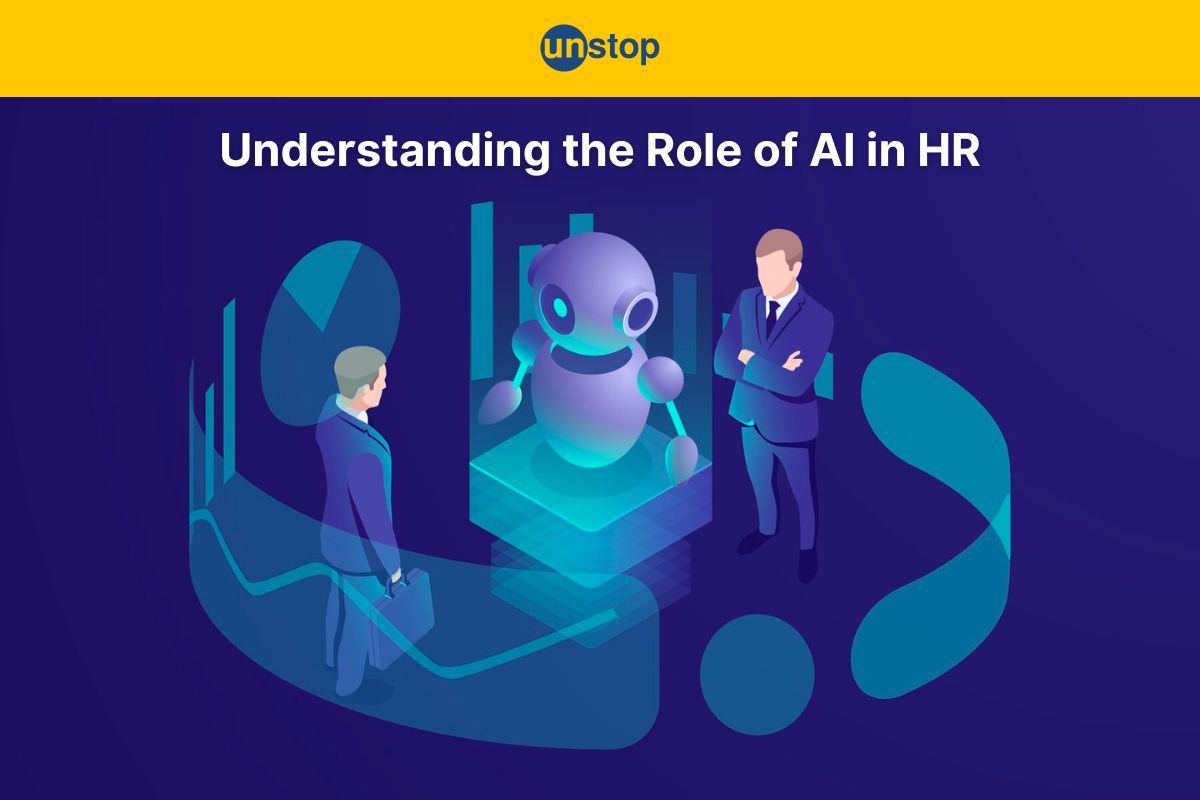
Artificial Intelligence is one of the most revolutionary technologies to emerge in recent times. It has seeped its way into daily conversations, and most workplace functions. While AI is not replacing humans (at least, not yet), it has supported multiple roles at the workplace, streamlining processes, and enhancing decision-making - even in human resources.
By leveraging AI in HR, recruiters can automate repetitive tasks, improve candidate sourcing and selection, enhance employee engagement, and predict workforce trends. Today, AI-driven tools like chatbots for recruitment and predictive analytics for performance management are reshaping the HR landscape.
Dive in to better understand the role of AI in HR!
Role of AI in HR: Addressing Common Challenges
Currently, the three main challenges in the HR landscape are centered around talent acquisition, talent management, and continuous learning. AI can lend a helping hand and address all three:
- Talent Acquisition is time-consuming, subjective and reactive instead of proactive. AI can be used to improve candidate sourcing, screening and even onboarding.
- Talent management often follows a traditional approach to succession planning and workforce development, with common career development plans for all employees, irrespective of their needs and potential. AI can offer individualized plans, and predictive analysis can enhance skill gap analysis.
- Learning is driven by compliance rather than need or performance. The modern workforce needs to constantly upskill and evolve to not just survive in a dynamic job market, but also contribute innovatively to organizational goals. AI can promote collaborative learning between departments, and offer regular, updated, and adaptable learning modules.
Discover top talent and explore the best solutions for hiring, engaging, and assessing candidates on Unstop.
Let’s better understand the role of AI in different HR functions.

Artificial Intelligence in HR Processes
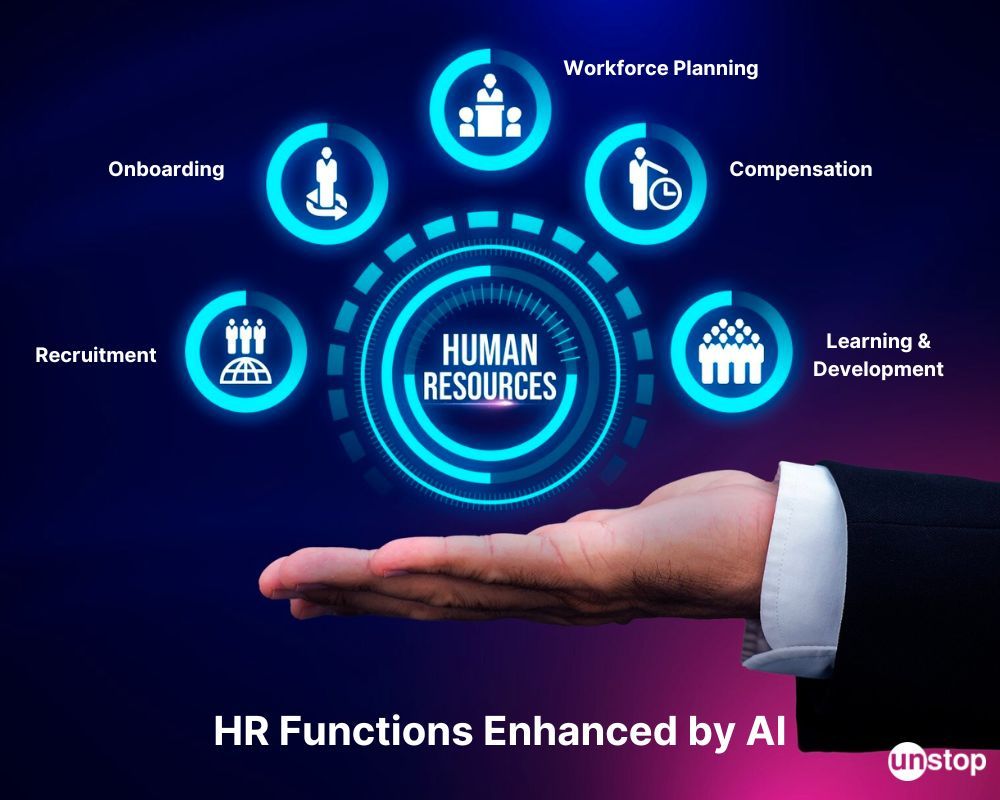
Recruitment
AI in Human Resources has significantly transformed hiring by streamlining candidate sourcing and screening processes. Here’s how:
- Managing Large Volumes of Applications: With the aid of AI tools, recruiters can efficiently sift through a vast pool of potential candidates to identify the most suitable matches for specific job roles. By automating these tasks, HR professionals can focus more on engaging with job seekers and enhancing candidate experience.
- Unbiased Candidate Selection: Utilizing AI algorithms in recruitment helps mitigate bias during the candidate selection process. These algorithms are designed to evaluate candidates based on their qualifications and skills rather than personal attributes, leading to fairer hiring decisions.
- Enhancing Candidate Experience: By implementing AI-powered chatbots, organizations can provide real-time assistance to potential candidates, answering queries about job descriptions, company culture, and application procedures promptly.
According to Forbes, 22% of enterprises are already using artificial intelligence for talent programs, improving their hiring, retention, and Diversity & Inclusion (D&I) operations.
Onboarding
- Automated Administrative Tasks: AI tools streamline administrative tasks like regular paperwork, initial training scheduling, and data entry for employee details. This automation frees up valuable time for HR teams to invest in building relationships with employees. And it reduces human error.
- Real-Time Feedback and Support: AI-powered tools can offer real-time feedback and support to new hires based on their interactions during the onboarding process. For instance, AI can analyze user interactions with onboarding materials, such as time spent on specific modules or areas where they struggle with quizzes. This instant feedback loop enhances the overall onboarding experience by addressing concerns promptly.
Quick Tip: Don’t rely solely on AI. Offer various ways for new hires to provide feedback and seek help, like surveys, chatbots, or mentoring programs.
Workforce Planning
- Data Analytics: Future talent needs can be predicted by analyzing historical data and trends within the organization. AI algorithms can accurately forecast staffing requirements. Skill gaps can also be identified by analyzing workforce performance data. HR teams can thus, pinpoint areas where additional training or upskilling is necessary for enhancing team capabilities.
- Resource Allocation: AI can be leveraged to match skills and expertise with specific project requirements, ensuring teams are well-equipped for maximum productivity.
Compensation
- Analyzing Market Trends: AI plays a crucial role in compensation management by providing market insights through analyzing salary data points and competitor data. This helps in determining how roles should be banded based on local market trends.
- Increasing recruiting efficacy: AI can be used to analyze historical data on past hires, job roles, and compensation packages. This data can be used to inform competitive offer creation, but it might not directly predict an individual candidate's likelihood of accepting. Tasks such as processing payroll or responding to frequently asked questions about benefits or compensation can also be handled by AI-powered systems.
Learning and Development
- Tailored Training Programs: Tailoring training programs to individual employee needs is crucial for addressing skills gaps and fostering development. By analyzing performance data through AI, companies can identify areas where employees need improvement. This personalized approach ensures that employees receive relevant training that directly impacts their job roles.
- Continuous Learning Opportunities: Offering continuous learning opportunities through AI-driven platforms enables employees to acquire new skills at their own pace. These platforms provide access to a variety of resources such as online courses and virtual workshops. Employees can study topics of interest or areas where they want to improve without being bound by rigid schedules. This flexibility encourages self-directed learning and empowers individuals to take charge of their professional growth.
- Progress Tracking and Measurement: Tracking and measuring employee progress allows organizations to create targeted development plans based on real-time insights. By leveraging AI algorithms, companies can monitor outcomes and adjust training strategies accordingly. Analyzing performance data also helps in identifying trends, strengths, and areas for improvement among employees.
AI Tools for HR Functions
- IBM Watson: Utilizes AI to analyze employee data and provide insights for better decision-making in HR processes.
- HireVue: Uses AI to conduct video interviews and evaluate candidates based on their responses and behavior.
- Textio: AI tool that helps in writing job descriptions that are more inclusive and appealing to a diverse pool of candidates.
- Pymetrics: Uses AI to assess job candidates based on their cognitive and emotional traits to match them with the right roles.
- X0PA AI: AI tool that streamlines recruitment processes by automating candidate sourcing, screening, and scheduling interviews.
- Lever: Lever provides features such as collaborative hiring, interview scheduling, and candidate relationship management.
- Greenhouse: Greenhouse offers tools for sourcing, interviewing, and onboarding candidates, as well as analytics to track and improve recruitment performance.
- GPTZero: This AI writing checker tool is trained to detect content created with ChatGPT, GPT4, Bard, LLaMa, and other AI models.
How to Adopt AI in HR?
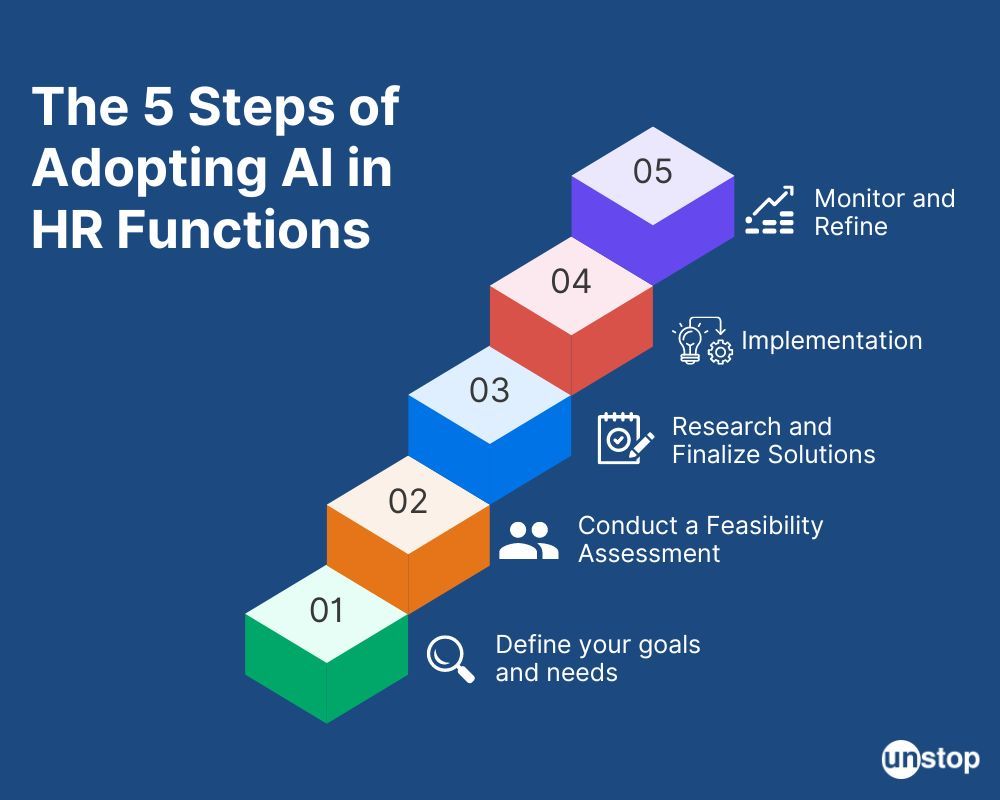
Here's a roadmap to consider when adopting AI in your HR function:
1. Define Your Goals and Needs:
- Identify areas for improvement: Start by analyzing your current HR processes and pinpoint areas where AI can add value. Is it streamlining recruitment, improving performance management, or enhancing employee engagement?
- Set realistic goals: Don't try to automate everything at once. Focus on a specific HR function and set achievable goals for AI implementation.
2. Conduct a Feasibility Assessment:
- Evaluate your data readiness: Does your HR department have clean, organized data readily available for AI systems to analyze effectively? Investing in data quality might be necessary.
- Consider your budget and resources: AI solutions can vary in cost. Research different options and ensure you have the resources to implement and maintain the chosen AI system.
3. Research and Finalize Solutions:
- Choose the right AI tools: Research different AI-powered HR solutions that align with your goals and budget. Consider factors like scalability, security, and ease of integration with existing HR systems.
- Focus on user experience: Ensure the chosen AI solution is user-friendly for both HR professionals and employees. Consideration for training and support is crucial.
4. Implementation and Change Management:
- Pilot program and testing: Start with a pilot program in a specific HR function to test the AI solution, identify any issues, and refine the approach before full-scale implementation.
- Communication and training: Communicate transparently with employees about how AI will be used in HR. Provide training for HR professionals on using the AI tools effectively.
5. Monitor, Evaluate, and Refine:
- Track key metrics: Monitor the impact of AI on your HR processes. Are you achieving your desired goals?
- Regular evaluation and improvement: Continuously evaluate the effectiveness of your AI solution and make adjustments as needed based on data and feedback.
Important: To effectively leverage AI tools, training HR professionals is essential. This training should focus on not only using the tools but also understanding their limitations and potential biases. By empowering HR teams with the knowledge and skills to work alongside AI systems, organizations can maximize the benefits of automation while minimizing risks.
Addressing Challenges of AI in HR
Artificial Intelligence (AI) is making waves in the HR landscape, automating tasks, streamlining processes, and offering valuable insights. However, alongside its benefits, AI in HR also presents some challenges that need to be addressed. Here are some of the major ones:
- Bias and Discrimination: AI algorithms are trained on existing data, which can reflect societal biases. This can lead to discriminatory outcomes in areas like recruitment, performance evaluation, and compensation. Mitigating bias requires careful data selection, algorithm audits, and ensuring diverse representation in training data sets. Regular audits should be conducted to evaluate algorithm performance and identify any biases that may exist.
- Job Displacement: Automation powered by AI might lead to job losses in HR departments, particularly for tasks like resume screening or scheduling interviews. The focus should be on reskilling HR professionals for more strategic roles that leverage AI effectively.
- Transparency and Accountability: AI can be like a "black box," making it difficult for HR professionals and employees to understand how decisions are made. Companies can increase employee confidence in the technology by clearly explaining how AI algorithms arrive at decisions.
- Privacy Concerns: As AI collects and analyzes employee data, concerns about privacy arise. Clear data privacy policies, employee consent, and robust data security measures are crucial to address these concerns.
- Ethical Considerations: The use of AI in HR raises ethical questions, such as the use of facial recognition technology for onboarding or monitoring employee behavior. Careful consideration of the ethical implications and potential misuse of AI is essential.
- Limited Emotional Intelligence: AI struggles to understand the human aspect of HR. It can't replicate empathy, emotional intelligence, or the ability to handle complex negotiations or workplace conflicts. HR professionals still play a vital role in areas requiring these skills.
- Regulation and Oversight: As AI continues to evolve in HR, regulations and oversight might be needed to ensure the ethical and responsible use of this technology. Establishing clear guidelines and best practices is crucial.
By acknowledging these challenges and taking proactive steps to mitigate them, companies can leverage AI responsibly to enhance their HR functions, improve efficiency, and create a fair and ethical work environment.
Ethical and Responsible AI Use
Guidelines
Establishing clear guidelines for ethical AI deployment in HR is crucial to ensure fairness and transparency. Companies should prioritize accountability and regularly review their AI systems to prevent bias.
Data Privacy
Safeguarding employee data privacy and security in AI applications is non-negotiable. Implementing robust encryption protocols and obtaining explicit consent from employees are essential steps to protect sensitive information.
Fairness and Inclusivity
Promoting fairness and inclusivity in AI-driven HR processes requires continuous monitoring for discriminatory patterns. Regular audits can help identify biases, ensuring that all employees have equal growth opportunities.
The Future of AI in HR

The potential use cases of AI in HR are vast, ranging from automating routine tasks to identifying patterns that can help in talent retention strategies. As technology evolves, the true potential of AI lies in creating a more efficient and inclusive workplace environment.
Here are some potential areas of growth:
- More Sophisticated Talent Acquisition: AI can go beyond basic resume screening to analyze a wider range of data points, including skills assessments, social media profiles, and past work samples, for a more holistic evaluation and better candidate-job matches.
- Enhanced Employee Experience: AI can analyze employee data like sentiment surveys or communication patterns to identify potential burnout or disengagement and provide resources or interventions to promote well-being.
- Collaboration Between Humans and AI: While AI can provide valuable insights and recommendations, human judgment and expertise will remain crucial for making final decisions in HR functions that require a nuanced understanding of human behavior.
Overall, the future of AI in HR is one of collaboration and augmentation. AI is expected to become a powerful partner for HR professionals, automating tasks, providing data-driven insights, and helping to create a more efficient, fair, and engaging work environment. However, ethical considerations, transparency, and human oversight will remain critical aspects of ensuring responsible and successful use of AI in HR.
Closing Thoughts
AI in HR can have a transformative impact on recruitment, onboarding, workforce planning, and learning and development. As AI continues to evolve, integrating it thoughtfully can revolutionize how HR functions, enhancing efficiency and personalization while driving organizational success.
To leverage AI effectively in HR, it’s necessary to stay informed about advancements, prioritize ethical considerations, and embrace continuous learning. By doing so, companies can position themselves at the forefront of this evolving field, driving innovation and maximizing the potential of AI to shape the future of HR practices.
Frequently Asked Questions
1. How does AI-driven recruitment benefit organizations?
AI-driven recruitment automates candidate sourcing and screening, saving time and resources while improving the quality of hires. By analyzing large datasets quickly, AI identifies top talent efficiently.
2. How can organizations leverage AI for workforce planning?
Organizations can use AI to forecast future talent needs accurately, identify skill gaps within the workforce, and optimize resource allocation. By analyzing data trends, businesses can make informed decisions for strategic workforce planning.
3. What AI tools are available for talent acquisition and management?
AI tools like Lever, Greenhouse, and HireVue assist in sourcing candidates, assessing skills, and predicting employee performance.
4. How can AI be integrated with existing HR systems?
AI tools can be integrated into existing HR systems through APIs (Application Programming Interfaces) and compatibility checks.
5. Can AI help in workforce planning and skill development?
Yes. AI aids in predicting future skill requirements, identifying skill gaps, and providing personalized learning and development opportunities.
Suggested Reads:
- Employee Wellness Programs: Find 30+ Strategies & Real-Life Examples
- Future of Remote Work Is Hybrid: A Look At The Latest Trends
- Role Of Soft Skills In Modern Hiring Can't Be Ignored. Here's Why
- Skill Development Using Operations Simulations: Unveiling Benefits
- Employee Satisfaction: Uncovering Its Importance & Strategies
I’m a reader first and a writer second, constantly diving into the world of content. If I’m not writing or reading, I like watching movies and dreaming of a life by the beach.
Login to continue reading
And access exclusive content, personalized recommendations, and career-boosting opportunities.
Subscribe
to our newsletter
Blogs you need to hog!
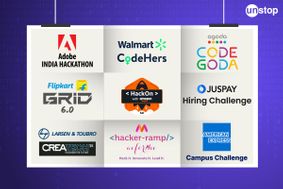
Organize Hackathons: The Ultimate Playbook With Past Case Studies

What is Campus Recruitment? How To Tap The Untapped Talent?
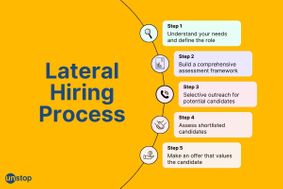
Lateral Hiring: A Complete Guide To The Process, Its Benefits, Challenges & Best Practices
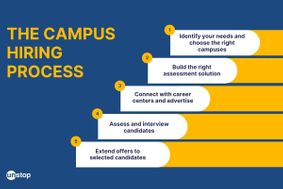












Comments
Add comment